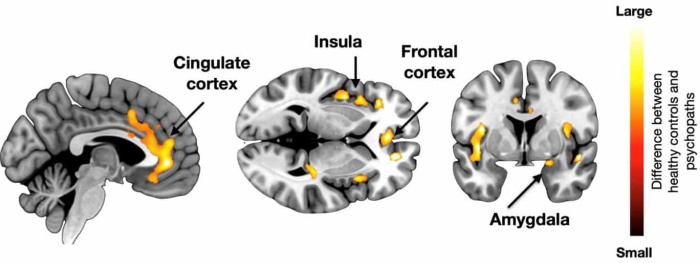What is Psychopathy?
Psychopathy is a personality disorder that is often characterized by a lack of empathy, impulsivity, and manipulative behavior. While there is still much to learn about the disorder, recent research has shed light on its neurobiological roots. In a paper published in the journal Molecular Psychiatry, researchers explore the genetic and environmental factors, brain regions, and neurotransmitters that may be implicated in psychopathy. They also suggest potential directions for future research and highlight the importance of better understanding the neurobiological mechanisms underlying the disorder.
The authors suggest that genetics may account for a significant portion of the variance in psychopathy, but that environmental factors such as childhood abuse and neglect may also play a role. They suggest that gene-environment interactions may be particularly important in the development of psychopathy. This highlights the need for continued research into both genetic and environmental factors that may contribute to the disorder.
Biology of Psychopathy
The researchers also discuss the brain regions and neurotransmitters that may be involved in psychopathy. Their results concluded that expression of ZNF132 and RPL10P9 is greatly reduced in neurons and astrocytes of habitually violent offenders. They also suggest that dysfunction in the prefrontal cortex, amygdala, and other brain regions may be implicated, as well as imbalances in neurotransmitters such as serotonin and dopamine. They also introduce a theory that states that a deficient opioid system may be implicated in psychopathy, which would explain why psychopaths tend to engage in drug abuse; to satisfy their reward system. This suggests that further research on the neurobiological basis of psychopathy could lead to a better understanding of the brain mechanisms involved in the disorder.

The authors highlight several potential directions for future research, including the need for more precise measurements of psychopathy, the use of animal models to study the disorder, and the development of more effective treatments. They suggest that identifying specific biomarkers of psychopathy could be particularly useful in developing more targeted treatments. Additionally, the authors suggest that a better understanding of the neurobiological mechanisms underlying psychopathy may have broader implications for understanding other psychiatric disorders.
Research on the neurobiological roots of psychopathy could ultimately have implications for reducing crime rates by identifying effective treatments for individuals who exhibit psychopathic traits and who are at higher risk of engaging in criminal behavior. Additionally, a better understanding of the neurobiological mechanisms underlying psychopathy could lead to more targeted interventions aimed at preventing the development of psychopathic traits in the first place, potentially reducing the number of individuals who engage in criminal behaviour.
In conclusion, the research on the neurobiological roots of psychopathy provides a valuable framework for understanding the disorder and may lead to new treatments and diagnostic tools in the future. Continued research in this area is critical to further our understanding of this disorder and to improve outcomes for individuals affected by it.
word count: 487
